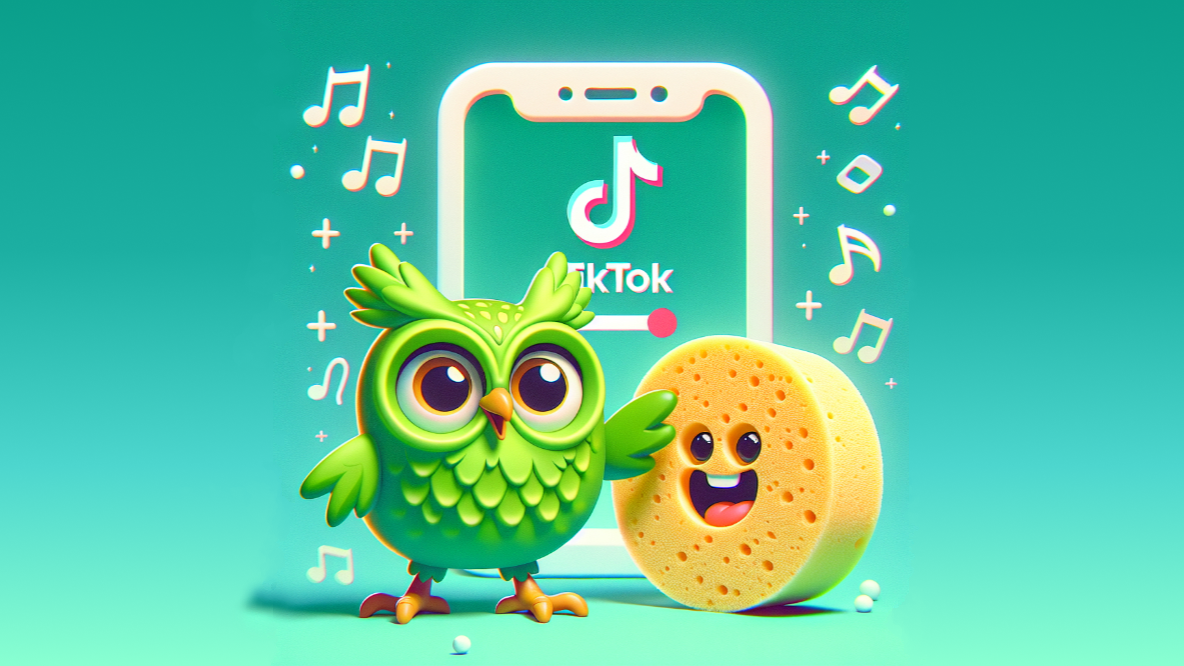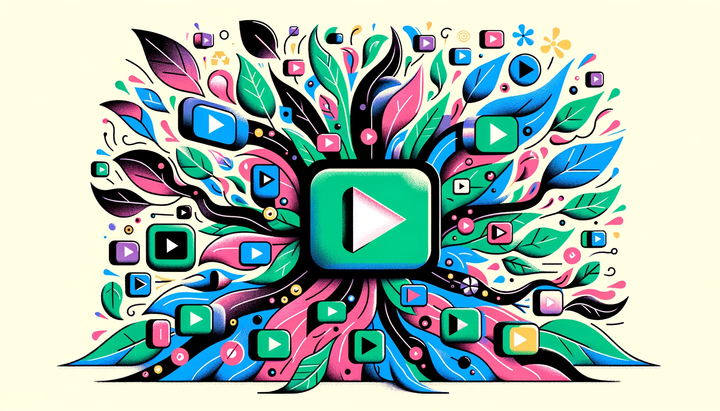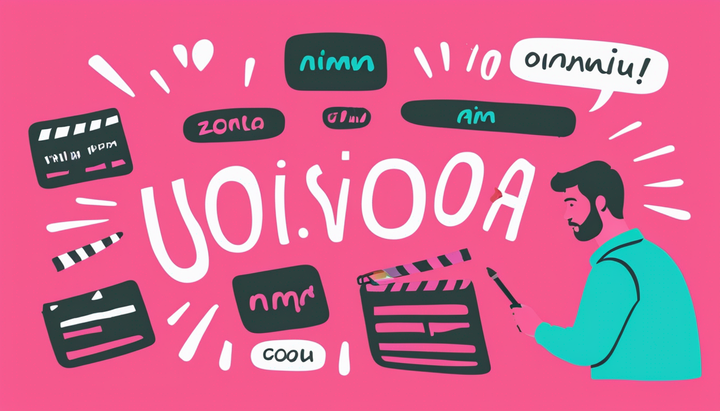Unhinged Social Media Brands and What We Can Learn From Them
What is unhinged marketing and why is it taking over social media? Join us on a deep dive into the most unhinged brands and what we can learn from their content strategies.

The idea of “unhinged” brands on social media has taken off in the last couple of years to varying levels of support and criticism from marketers and consumers alike.
You've probably seen these accounts—and their content.
But before you hit copy-paste on the unhinged marketing playbook, let’s take a deeper look at what’s behind this apparent shift in social media marketing. How did we get here? Why have so many brands gotten so unhinged? And what can we learn from the brands that are doing it well?
What is unhinged marketing?
Unhinged marketing leans into less polished, more authentic content and often toes the line of what’s considered “appropriate” subject matter for brand accounts. This type of chaotic content aims to break down pre-established notions of what brand content should look like. And yes, it's often trying to appeal directly to Gen Z consumers.
While using the word “unhinged” to describe marketing strategies is relatively new, the concept of funny, unexpected, and shocking advertising is not. Marketing’s history is full of brands breaking the mold with clever and sometimes scandalous content.
Marketing has always leaned on shock value and humor
In 1919, budding deodorant brand Odorono took out an advertisement in Ladies’ Home Journal, labeling untreated body odor as a major social and romantic problem for young women.
While modern audiences certainly wouldn’t call this anything close to “unhinged,” contemporary audiences were horrified by the explicit references to bodily fluids (perspiration). Offended readers canceled their subscriptions to Ladies’ Home Journal and wrote to the editor to complain. But the campaign worked and Odorono’s sales increased by more than 100% that following year.
And it isn’t just “shock value” that moves product. Marketers have always leaned into humor, as well.
Take the 1967 “Please don’t squeeze the Charmin” commercial campaign, for example, centering on the character of Mr. Wiggins, a tightly wound grocery store manager. Charmin ran over 500 variations of this commercial because it was so popular.
There also seem to be some odd… undertones to these commercials, but we’re not sure if that’s just our modern eye’s interpretation. Although if Charmin’s more modern marketing is any indication, maybe not.
As audiences have evolved, marketing has, too. The most successful (and memorable) marketing campaigns are able to nail contemporary audiences’ humor and preferences. If they do it well enough, brands can shift their consumer demographics (i.e., who they reach and appeal to), shaking off old brand perceptions and targeting new markets.
In 2010, Old Spice did just that when they launched their “The man your man could smell like” campaign. Old Spice was looking to ditch their “grandpa’s after shave” reputation and target a younger audience. The ads struck the perfect tone for Millennial humor—slightly absurdist and “random” but mostly inoffensive—and quickly went viral on YouTube, even winning the Grand Prix award at the Cannes Film Festival that year.
The campaign was so popular, in fact, that it set off a commercial trend that lasted most of the decade. At the same time, brands were beginning to dip their toes into the waters of social media.
The advent of social media and our first taste of “spicy” brands
Social media initiated a huge shift in how brands spoke to consumers. Nowhere was this more apparent than on Twitter, where we saw the first prototypes of unhinged brand content.
The hallmark of this era was an irreverent brand voice, unafraid to clap back at consumers and other brands alike. Wendy’s Twitter account went viral for roasting their followers and fellow fast food brands.
Uniforms our employees can wear in the winter.
— Wendy’s (@Wendys) January 4, 2019
During a time when we were seeing highly curated brand accounts and sponsored influencer posts on channels like Instagram, less polished brand content was refreshing and unique. Things didn’t start getting truly unhinged until TikTok, though.
Duolingo and the birth of the “unhinged” brand account
In 2021, while most brands were still figuring out how to tackle TikTok, the big new player on the social media scene, Duolingo was racking up followers and views. Zaria Parvez, Duolingo’s TikTok account manager, built a strategy around authentic, timely content by moving quickly on trends—especially trends that other brands were hesitant to even try—and roasting naysayers in the comments.
@duolingo plz like comment and susbscribe to save my job xoxo #duolingo #brandtok #helpme #comedy #trend #DuaLipa ♬ Notifications by 1xrio - rio
By this time, most consumers but particularly Gen Z consumers were tired of overly-manicured and hyper-produced brand accounts—the kind "Legal" signs off on. A lot of Duo’s TikTok popularity came from the fact that they were doing things no one expected from a brand. Behavior that seemed a bit “unhinged.”
Examples of unhinged brands on social media
While Duolingo pioneered the modern interpretation of an unhinged brand account, they’re definitely no longer the only brand in the genre. Let’s take a look at some of the most unhinged brands online and see what makes them successful.
Here’s our rubric for measuring successful unhinged content:
1. Is it funny? Obviously, humor is fairly subjective but unhinged content specifically tends to cater more toward Gen Z’s sense of humor.
2. Is it relevant? Like any marketing content, unhinged marketing still needs to relate back in some way to a brand’s product or service, or at least their audience’s interests.
3. Is it risky? Consumer's palates for social content are far less conservative than they used to be but there’s still a tightrope that brands need to walk between just shocking enough to get attention and so over the top they’re doing damage control.
Let’s get into the unhinged examples.
1. Duolingo
Duolingo really is the blueprint for unhinged social media brands. As of writing this, they have nearly 10M followers on TikTok and continue to go viral, with videos regularly hitting 500K+ views.
@duolingo Fix bugs and add something new ❌ Make gegagedigedagedago ✔️ #duolingo #gegagedigegagedado #languagelearning ♬ original sound - The real bill collector
Not only does Duo execute the memey video content well, their community engagement is equally impressive. Shady, silly comments responding to users on their own videos in tandem with commenting on other brands’ and users’ videos keep the audience engaged.
Another key aspect of their strategy: the mascot. Turning the Duolingo owl into the face of their brand online lets them participate in tons of trends and memes that would otherwise require a human face.
They’re not just crushing it on TikTok, either. Their recent Super Bowl ad was part inside joke, referencing one of their own TikTok posts, and part master class in synchronized multichannel marketing. As the commercial went live, a push notification went out to all Duolingo users reminding them to “do their Duo.”
@alidoescopy Which ad has been your favourite so far? I loved the oreo twist on it and the google javier in frame ad #superbowl #usher #duolingo ♬ Yeah! (feat. Lil Jon & Ludacris) - Usher
Self-referential, cheeky, and wholly unexpected.
Our team’s breakdown:
- Is it funny? Yes.
- Is it relevant? For the most part.
- Is it risky? Sometimes, but never enough so that it damages brand reputation.
🎖️ Overall rating:
- A+
- Completely unhinged, but it works.
2. Scrub Daddy
With nearly 4M followers on TikTok, Scrub Daddy isn’t quite getting the same amount of reach and engagement as Duo, but they’re certainly just as unhinged. Maybe more so.
In fact, we had to be pretty selective about which examples we pulled because most of them are fairly explicit. Scrub Daddy’s videos are full of swearing and sexual innuendo. Risque content aside, they’re clearly doing something right. Here’s a recent, tamer example that has over 2M views:
@scrubdaddy A friendly reminder… #scrubdaddy #smile #cleantok #cleaningtiktok #americasfavoritesponge ♬ original sound - Scrub Daddy
Like Duolingo, Scrub Daddy is leaning in with relevant memes and trending sounds and they’re even using their product as its own mascot. Yes, their strategy is definitely a bit riskier than Duolingo, but with risk comes high reward.
Our team’s breakdown:
- Is it funny? For the most part (and for a specific audience), yes.
- Is it relevant? Yes, nearly all their content features their product directly.
- Is it risky? Very. It performs well with Gen Z, but might alienate other consumers.
🎖️ Overall rating:
- B+
- Maybe too unhinged?
3. Ryanair
Next up, we've got Ryanair, which has 2.2M followers on TikTok. Ryanair is a budget airline based out of Ireland, known for nickel-and-diming customers for every little thing. They actually lean into that reputation on TikTok, which is part of what makes their content work so well.
@ryanair ryanair 101 🐐 #ryanair ♬ original sound - Ryanair
Like Duolingo, Ryanair is quick to jump on trends and memes and is very active in their comments section. They use the comments to shoot off witty, sarcastic, and shady responses to people talking about upcharges and pricing.
Not even users commenting positively are spared the clapback, which seems to be what the commenters are actively seeking. People still love when a brand responds, which has been true since the days of Wendy’s Twitter roasts.
Another key unhinged ingredient that Ryanair shares in common with Duolingo and Scrub Daddy is the use of a mascot, using a green screen face effect to anthropomorphize a Ryanair jet. In fact, the use of a mascot is a trend we saw with most of the unhinged social media accounts we reviewed. Having a central character that can embody the snarky, unhinged voice of the brand goes a long way.
Our team’s breakdown:
- Is it funny? Yes.
- Is it relevant? Yes, nearly all their content features a Ryanair jet.
- Is it risky? Not really. They lean into their existing reputation for being cheap.
🎖️ Overall rating:
- A+
- Completely unhinged, but it works.
4. Liquid Death
Liquid Death, the canned water company, has 4.9M followers on TikTok with videos that regularly go viral. They’ve kind of made “sticking it to the haters” their whole brand—and it’s working for them. They’ve released three “Greatest Hates” albums (yes, actual albums you can stream on Spotify), featuring actual hate comments the brand has received, verbatim.
@liquiddeath Introducing Greatest Hates Vol. 3 #liquiddeath ♬ original sound - Liquid Death
And it’s not just random commenters online that Liquid Death turns into great content. When they launched their lemonade iced tea flavor, called Armless Palmer, and received threats of legal action from the Arnold Palmer estate, they decided to run a campaign around the name change.
@shwinnabego Just another example that liquid death is unparalleled when it comes to marketing #marketing #advertising ♬ Blue Blood - Heinz Kiessling
This is pretty typical of the stunt marketing that Liquid Death favors on their accounts. For example, in lieu of buying a Super Bowl ad this year, they decided to auction off ad space on Ebay, a stunt that will cost them much less and has already netted them more attention.
@snachwithzach Liquid Death launched another crazy marketing campaign today and it’s as bizarre as all the others. Instead of spending money on Super Bowl ads this year, they’ve instead decided to auction off ad space to 500,000 boxes of their canned water on eBay. The buyers have now become the sellers. Bidding started this morning at $500 and is already approaching $70,000, but will whoever wins use it for chaos like its host? Time will tell. #marketing#branding#liquiddeath#water#icedtea#drinks#ebay#auction#superbowl#fyp ♬ Yacht Club - MusicBox
Overall, Liquid Death’s content is much more polished and produced than what we typically see from unhinged brand accounts. The shock factor and humor also skews slightly older, hitting more Millennial humor notes than Gen Z.
Our team’s breakdown:
- Is it funny? For the most part (and for a specific audience), yes.
- Is it relevant? Yes, nearly all their content features their product directly.
- Is it risky? Some of it, but they turn the backlash into content.
🎖️ Overall rating:
- B+
- Mostly unhinged.
5. Hootsuite
We wanted to add a B2B example to this list, because unhinged marketing has (sort of) made the jump from B2C and DTC to more B2B audiences. Hootsuite has 76.2k followers on TikTok and most of their posts get between 2k and 700k views.
@hootsuite Your spicy comments are welcome here 🫶
♬ original sound - $
Compared to the other brands on this list, Hootsuite’s reach and engagement is modest and their content is fairly tame. But it’s clearly resonating with their target audience, social media managers. Just look at the comment section on any of their popular videos.
A lot of the comments are from other brands, aka from brand account managers, Hootsuite’s ideal customer.
They’ve also leaned into working with creators. They collaborated with creator Emily Zugay, known for “redesigning” brand logos to give their mascot a goofy refresh (yes, Hootsuite also has an owl mascot; we'll let you decide if it’s giving Duolingo copy-paste vibes).
@hootsuite it's a hot owl summer clothing optional 🥵
♬ original sound - Hootsuite
This was part of a larger brand design overhaul across all channels, with a new logo and a cheekier, more casual brand voice. And of course, the redesigned, bright red mascot is now the new face of Hootsuite on TikTok.
Our team’s breakdown:
- Is it funny? It’s clever and cheeky, but not always laugh-out-loud funny.
- Is it relevant? Yes. They’re speaking directly to SMMs, their end user.
- Is it risky? No, but it doesn’t need to be.
🎖️ Overall rating:
- B
- Somewhat unhinged (for B2B).
3 lessons we can learn from unhinged marketing
Part of the criticism surrounding unhinged marketing is that it’s overplayed.
When Wendy’s popped off on Twitter, roasting their followers, we saw a wave of brands trying (and frequently failing) to copy Wendy’s playbook. We’re seeing that again with unhinged marketing. But just because it doesn’t work for every brand doesn’t mean there’s nothing to learn from successful unhinged brands.
A lot of brands that fail with the unhinged approach try to copy the content style or aesthetic without really understanding what the strategy is. Let’s dig into some unhinged tactics that you can apply to any content marketing strategy.
1. Understand your audience.
Brands that succeed at unhinged marketing are brands that deeply understand their audience. They know what their audience finds funny, what they find interesting, and what they find shocking.
Most successfully unhinged brands target a mainly Gen Z audience, just like the successful brands of the 2010s targeted Millennials.
That doesn’t mean you have to target a Gen Z audience to be successful, of course. Instead, tailor your marketing content to suit the audience you do have/want, rather than blindly following trends.
2. Move quickly on trends.
Good unhinged content is truly surprising and unexpected.
Here’s what’s not surprising or unexpected: the 400th brand post using a meme from two months ago. And that’s true for all good brand content, not just the unhinged stuff. Moving quickly on relevant trends and topics can make or break otherwise great content.
3. Take big swings (even if you miss).
Unhinged brands are risky, some more so than others. While shocking and scandalous content might not be the best fit for your brand, you can still take risks with your content strategy.
Experiment with different formats and topics, try things outside your normal wheelhouse, and don’t be afraid to make content that flops.
4. Associate your brand with something.
It seems like brands that make unhinged marketing work know they have to break through the noise (by being unhinged, riding trends, etc.), but also still reinforce some sort of association with their brand.
Take Duolingo, for example. They’re constantly churning out unhinged content, but it’s not just random. The net-result of seeing Duolingo in their feed all the time is that users start to associate them with this idea of language learning, but make it actually fun.
They never come right out and say that, of course, because they don’t have to. They can just sneak it in under the radar, because the content is so casual and creative.
So, do you need to commission a mascot costume for your brand’s TikTok account? No. But there’s plenty of other inspiration you can take from unhinged brands. While the content may be unhinged, the growth of these accounts shows that the strategy is anything but.
Create content faster with Kapwing's online video editor →








